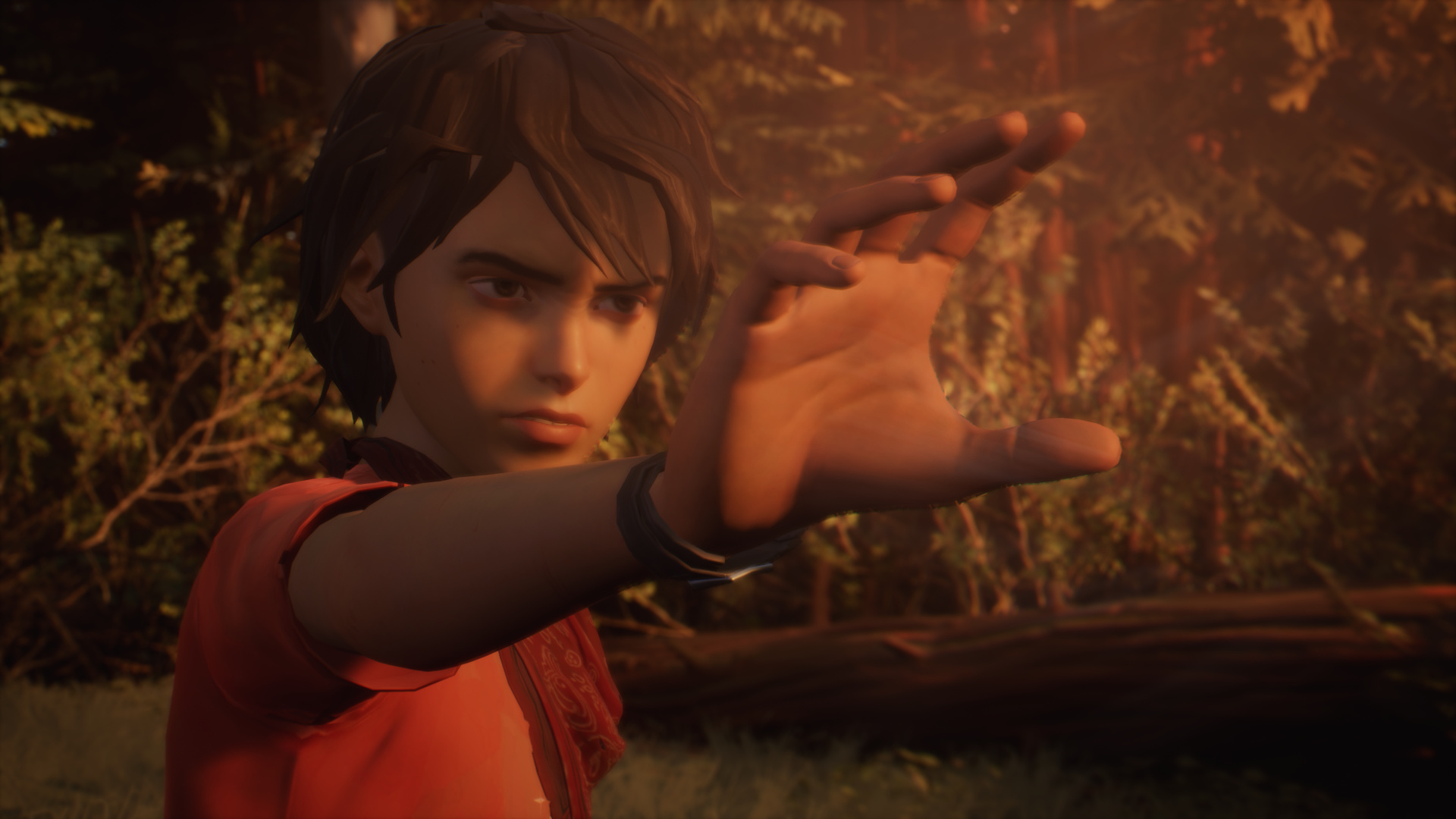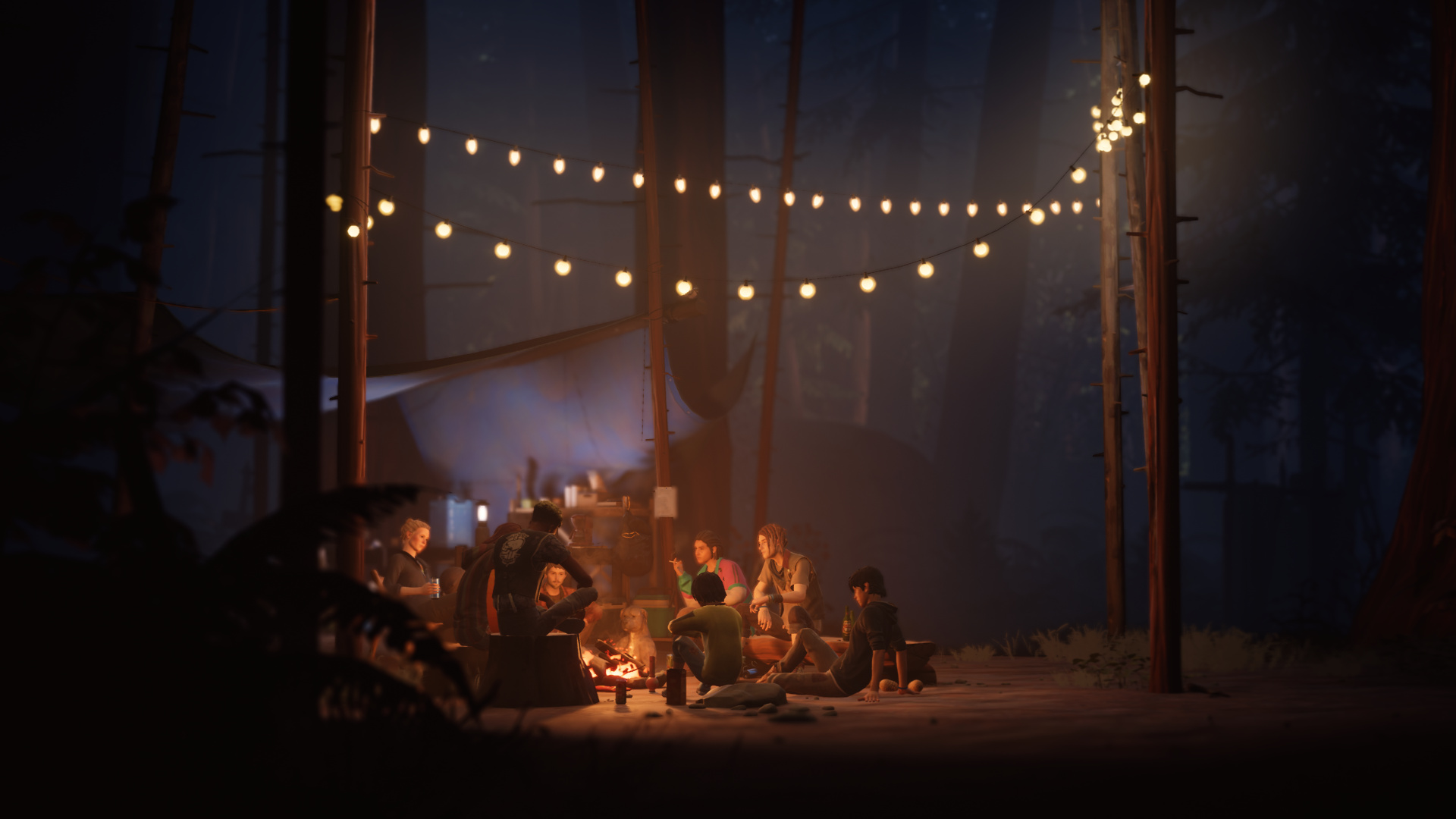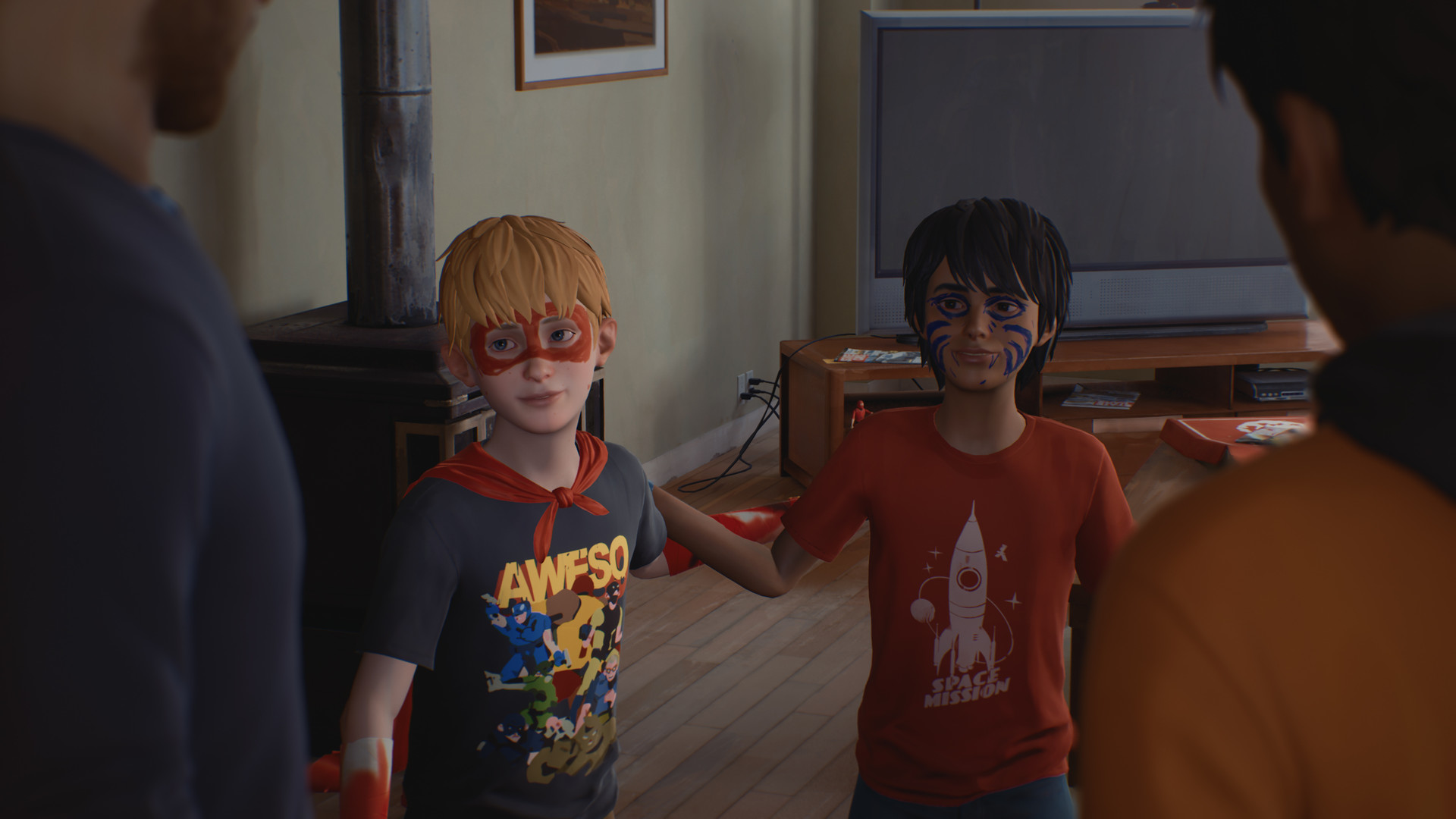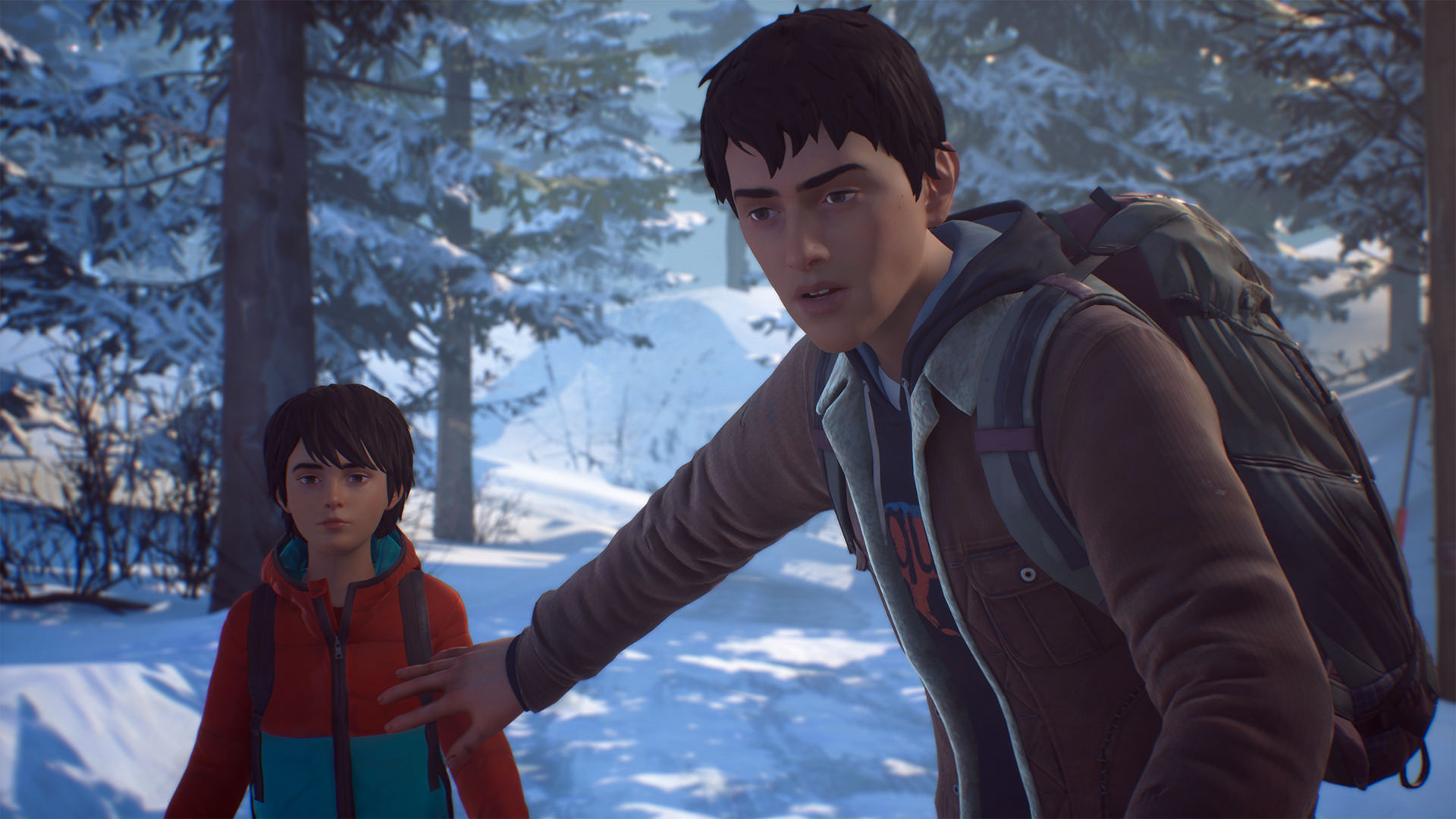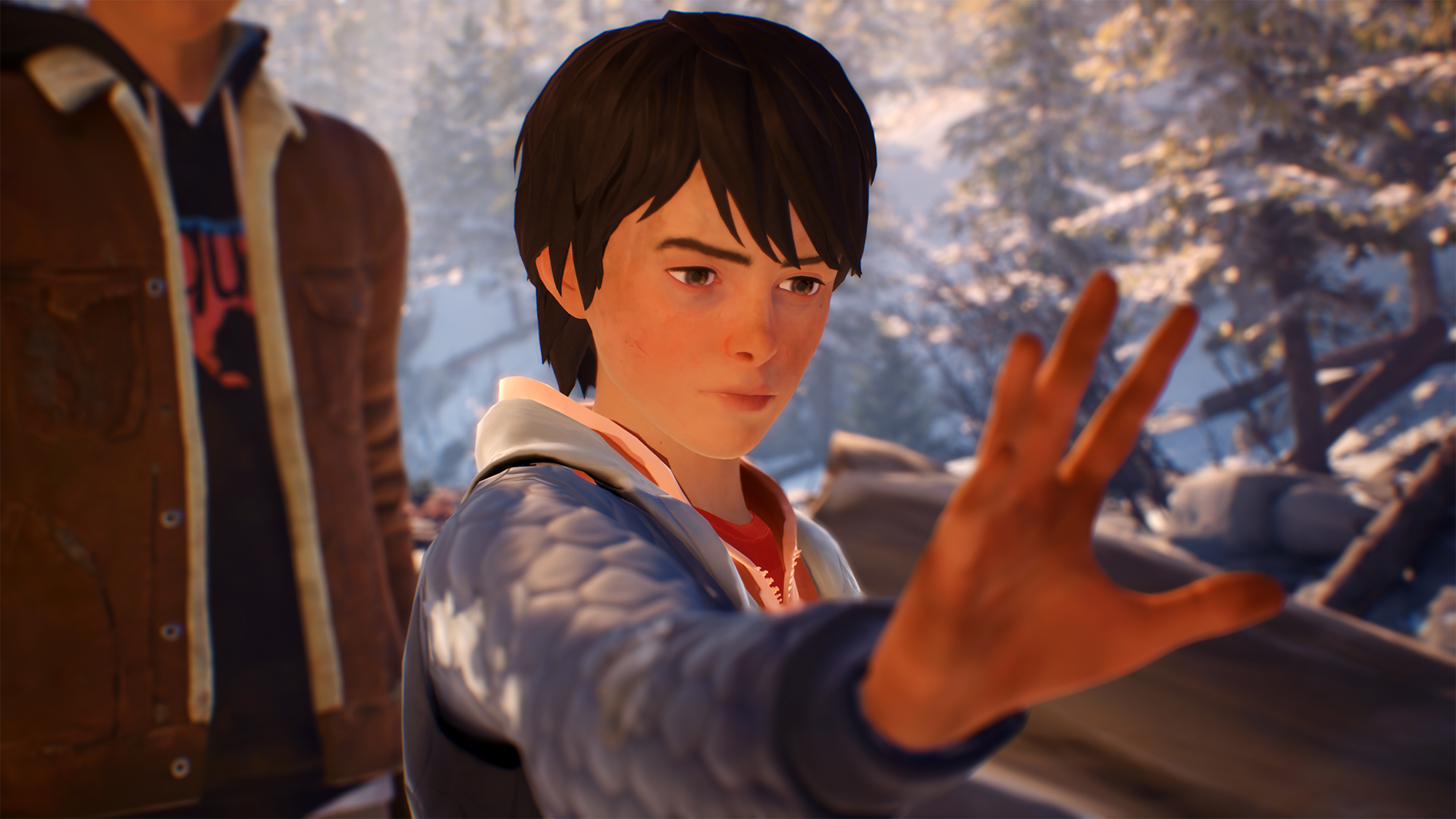
ALL EPISODES ARE AVAILABLE TO PLAY NOW!
Purchase the Complete Season and receive the 'Arcadia Bay' patch bundle to customise your in-game backpack.
The award-winning Life is Strange series continues with an all-new story from DONTNOD Entertainment.
After a tragic incident, brothers Sean and Daniel Diaz run away from home. Fearing the police, and dealing with Daniel's newly manifested telekinetic power – the power to move objects with your mind – the boys decide to travel to their father's hometown of Puerto Lobos in Mexico for safety.
Suddenly, sixteen year-old Sean is responsible for Daniel’s safety, shelter, and teaching him right from wrong. As Daniel's power grows, it’s up to Sean to decide the rules by which they live. Keep the power secret, or use it to help them in their journey? Beg, borrow, or steal? Reach out to family, or stay hidden?
As Sean, your choices shape the fates of the Diaz brothers, and the lives of everyone they meet.

From Seattle, to Portland, to California... through gas stations, abandoned shacks, backstreets and forests... the road to Mexico is long and filled with danger – but also friendship, wonder, and opportunity.
This is the trip that could bond Sean and Daniel forever… or tear their brotherhood apart.
Key Features:
• Award Winning Story-Telling
• Daniel is always learning from Sean – and what you teach him has far-reaching consequences.
• Stunning visuals and hand-painted textures.
• Emotive original soundtrack from Jonathan Morali, composer of the original Life is Strange - plus licensed tracks from Phoenix, The Streets, Sufjan Stevens, Bloc Party, First Aid Kit, and more.

At its core, Life is Strange 2 is a road trip game. Sean and Daniels journey from their home in Seattle takes them all across the western states of America: from the snow-covered gardens of wintery Beaver Creek, to the drifter camp under the giant redwoods in California, to the arid Nevada desert. Each environment adds something to the story and they are carefully crafted to feel unique but real: places you could almost go and visit in real life.
But locations only come to life when you put people in them. The biggest part of world building isnt just where does this prop go, but asking yourself: why is it there? Who are the people that live there and what effect do they have on the environment, and the environment on them? Creating a world that feels lived in and is a place that makes sense narratively requires both careful environmental and character design.
To explore the creation of the memorable locations of LiS2, and the diverse cast of characters who live in them, weve sat downwith Square Enix Art Director Rachele Doimo to discuss how the incredible art teams we work with at studios like DONTNOD bring everything to life
Lets start with Environments first. And remember, as with our previous blogs: beware spoilers!
Can you tell us what research went into some of the environments covered in Life is Strange 2?
Everything started with a trip that the game directors did a few years ago across the USA. It was a journey through a continent that made quite a mark in their life and work. All the memorable places they visited and people they met have contributed to their vision of Life is Strange 2.
What were some technical challenges for the larger scope of Life is Strange 2?
Performance had to be monitored constantly from asset creation to final lighting pass on each shot. A high number of lights can significantly slow down performance, but at the same time, they can make a huge difference in the quality of each single shot so all assets in a scene, from character models, to props, to lights, to total number of polygons, have to be managed in order not to reduce the framerate.

Given the changing environments in each Episode of the game, were there any environmental assets you were able to re-use, or was it a case of starting with a fresh palette of trees, rocks, and ground textures every time?
Each location had to be bespoke. Only a small amount of props could be reused, which also impacted development time. Generic grass, for example, is used in multiple locations, but trees and specific flora needed to be consistent with the part of the country that each episode is set. Every asset and material contributes and builds towards the unique, captivating look of an environment in Life is Strange.
Into the woods in Episode 1 is the biggest environment to date. Do we see something similar in Ep4?
At the beginning of Episode 4, when Sean is heading to Heaven Point, the Nevada desert area is probably the largest location in the game, in terms of visible distance. Although not the highest in asset density, it hopefully successfully creates a sense of loneliness and highlights Seans separation from his brother: walking on a vast unknown road through an unfriendly territory.

[b]With Life is Strange 1 we had a broad cast of characters but one that remained in a single location: Arcadia Bay. The town had a set number of inhabitants and wasnt changing in the same way the environments do in LiS2. Though new characters were intermittently introduced, the cast broadly focused on a specific set of people.
In Life is Strange 2, the boys are on the road, passing through all manner of towns and communities on their journey south, which, out of necessity, required a much larger supporting cast from the handful of major characters Sean and Daniel each Episode, to the innumerable secondary and background characters needed to populate each stop on their journey.
More characters were designed during the Episode 1 and 2 concept art stage than were designed for the whole of LiS 1. Rachele, with that in mind, wed like to talk about how the art team develops characters that fascinate us, whether they feature in an episode, a scene, or are just seen in the background.[/b]
Whats the process of designing a cast of memorable secondary and tertiary characters?
The art process starts when an approved character biography is provided by the design team. This is the foundation of what the character should actually look like, the details of which all have to speak about who this person is and what they went through in life before the player encounters them.
Facial features and body shape are extremely important, but clothes and accessories play a crucial role too. Even small details like a pin on a jacket can add a lot to the characters visual story. Designing a character is a rather long process that goes through many concepts and revisions, from the mood board stage to digital sketches, to the very detailed in-game model, which can itself be revised multiple times but it is extremely fun and rewarding when you see them being brought to life in the game.

The design process for Cassidy's tattoos went through a lot of development to make sure they represented her personality and character. No detail is too small!
Some characters obviously get more attention in the narrative of Life is Strange 2 than others. Do lesser-seen characters get the same special treatment in art and design as more primary characters? What does this process look like?
The main cast obviously is where the art team has spent most of their time, especially at the beginning of the project, but secondary and tertiary characters are no less detailed or less looked after.
Main characters, in this case Sean and Daniel, are designed and created at the beginning and then serve as a benchmark for the rest. What is built during this process sets the style for the entire cast, the level of detail, the level of definition in the textures and the overall rendering style. In Life is Strange 2 there was a major need for extras and minor NPCs in every episode. While those didnt need the same uniqueness as the leads, they certainly still had to be consistent to the narrative, place and role in the story.

Similar to the intricacies of her tattoos, Cassidy's overall appearance went through many iterations to get her style just right.
[b]
Who is your favourite character featured in Episode 3? [/b]
Very tricky question I like all the drifters, of course! They are fun to play and watch. I have a particular soft spot for Cassidy she is visually very interesting, without being conventionally dressed or styled, it really allows her personality to shine through. Her punk-inspired style, with worn-out clothes and purple hair, makes her a very iconic and memorable character. She is both contemporary and unconventional, both with her style and her charismatic personality.
Many thanks to Rachele for walking us through these elements of environment and character design. What were your favorite locations and characters on the journey so far do you have a soft spot for a background character?
Join in the conversation, and stay with us all the way to #JourneysEnd!

Minimum Setup
- OS: Ubuntu 18.04 64-bit
- Processor: 3.4GHz Intel Core i3-4130Memory: 4 GB RAM
- Memory: 4 GB RAM
- Graphics: NVIDIA GeForce GTX 680 2GB or AMD Radeon R9 380 4GB
- Storage: 42 GB available spaceAdditional Notes: * Requires Vulkan * NVIDIA requires 430.14 or newer drivers. * AMD requires Mesa 19.1.2 or newer. * Intel GPUs are not supported.
Recommended Setup
- OS: Ubuntu 18.04 64-bit
- Processor: 3.2GHz Intel Core i5-6500Memory: 8 GB RAM
- Graphics: NVIDIA GeForce GTX 970 4GB or AMD Radeon RX 470 4GB
- Storage: 42 GB available spaceAdditional Notes: * Requires Vulkan * NVIDIA requires 430.14 or newer drivers. * AMD requires Mesa 19.1.2 or newer. * Intel GPUs are not supported.
[ 6488 ]
[ 2221 ]
[ 1907 ]

